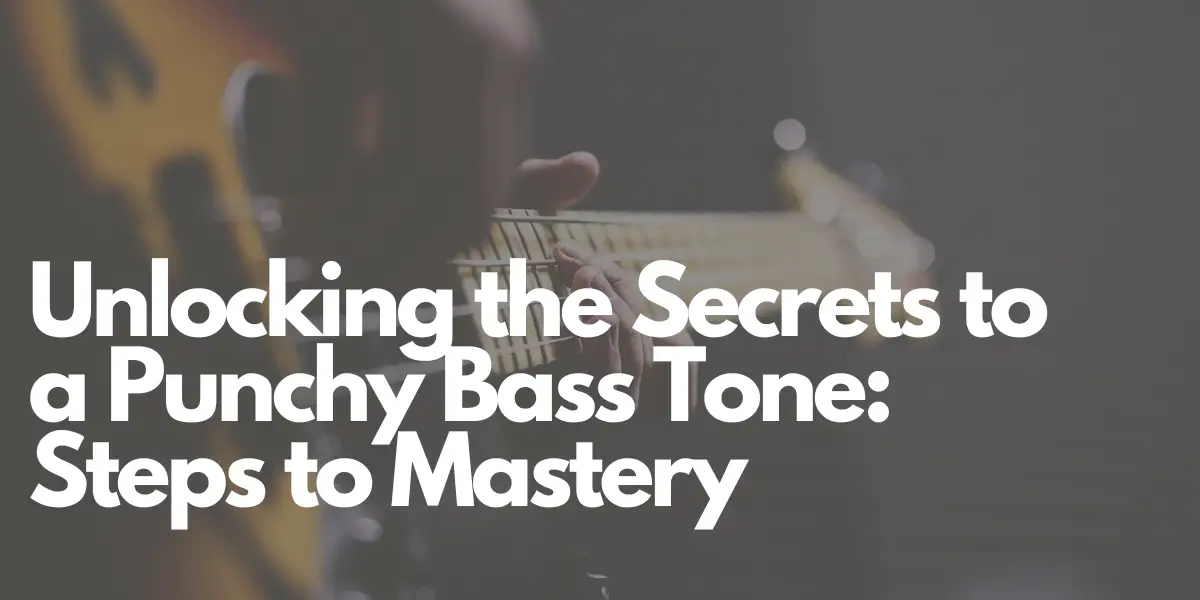For many bassists, the pursuit of the perfect punchy bass tone is never-ending. But what exactly is a punchy bass tone? It’s that balanced sound with the right blend of volume, attack, clarity, and the capability to cut through the mix. A good bass tone should neither drown out nor be drowned out by other instruments. Essentially, a punchy tone should give you a resonating, full bass thump that has a commanding presence.
Aesthetically, while tone preferences vary among individuals, the underlying science remains constant. This guide will delve into the essential concepts and give you practical examples to achieve that coveted punchy bass tone.
How to achieve a punchy bass tone
The likes of Flea (Red Hot Chili Peppers), Steve Harris, Geddy Lee, Robert Trujillo and many others have showcased punchy bass tones that have left many of us in awe. How did they achieve that elusive ‘oomph’?
One key aspect to understand is that our ears are better at picking up higher frequencies than low ones. A punchy bass tone requires a combination of the right bass, amp head, and cabinet. Additionally, knowing how to manipulate the EQ settings is essential.
Your sound also depends on your plucking hand technique, the type of pickups you use, your bass’s brand and model, the amplifier or speaker cabinet, EQ, compression, the sequence of your signal chain, and the output speakers.
Plucking hand technique
Your plucking technique is crucial. The punchiness can be significantly influenced by the force and style of your fingers. Playing between the pickup and the bridge, with an aggressive touch, can yield a more defined tone. However, continuously playing this way can be tiring.
Some bassists, like Geddy Lee and Duff McKagan, have achieved iconic tones by playing above the neck pickup with a robust attack. If you’re looking for an added edge, using a pick can enhance your tone’s attack and punchiness.
Pickups
The structure and design of the pickups play a role in the punchiness of the bass tone. Playing closer to the bridge while reducing the neck pickup can add punch.
Dynamics
Rhythmic styles, like those found in reggae and funk, emphasize staccato playing, adding percussiveness and helping to achieve a punchier tone. Techniques such as palm muting can further control the dynamics of your sound.
Choice of strings
The type of strings you use can influence your tone. Rounds, especially steel and nickel strings, are known for their brightness and are often preferred for a punchier sound.
Amp & Bass EQ settings
To achieve a punchy tone, avoid overemphasizing frequencies below 100Hz. Starting with a flat EQ and gradually adjusting is recommended. It’s essential to strike a balance so your bass neither sounds muffled nor too sharp.
Compression for punch
Compression helps in adding fullness and shaping the sound. Understanding the ADSR envelope (Attack, Decay, Sustain, and Release) is beneficial for achieving that punch.
The art of dialing in a punchy bass tone
Your ability to dial in the perfect punchy tone requires understanding frequency imbalances. Recording and analyzing your playing with the help of a DAW can be instrumental in achieving this.
Other considerations for a punchy tone
Always remember the interplay between the bass and the kick drum. They should complement rather than contradict each other. Your choice of tone should also suit the song’s context and sonic landscape. Lastly, be conscious of other instruments that might compete with your bass in the 60 to 250 Hz frequency range.
Understanding and implementing these factors can help you find that elusive punchy bass tone. With patience and practice, you can hone your sound to perfection. Happy playing!
Author: Mike P
Hi! My name is Mike! I’ve been an apartment producer/musician for 10+ years. I’ve played in punk bands, released EDM tunes on Beatport and iTunes, and have a semi-successful stock music portfolio. Read more…


